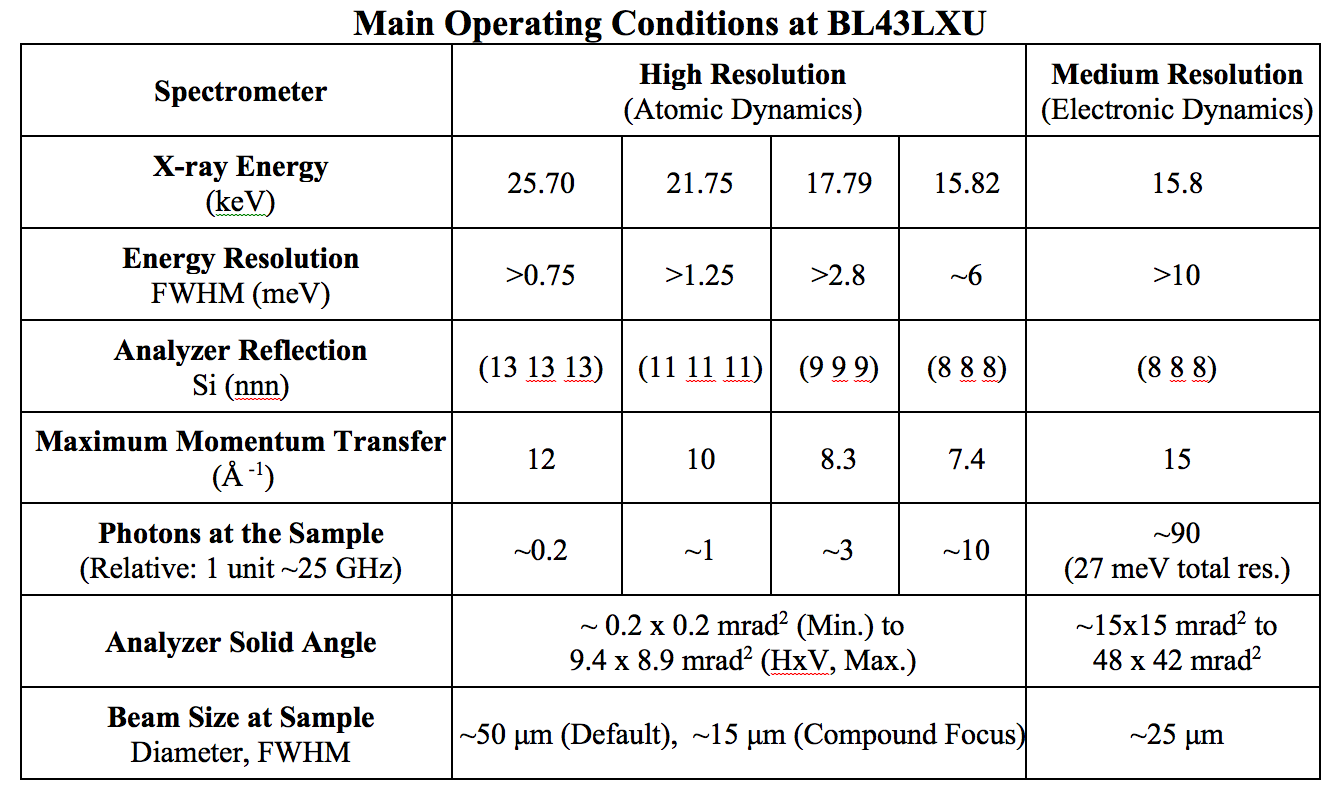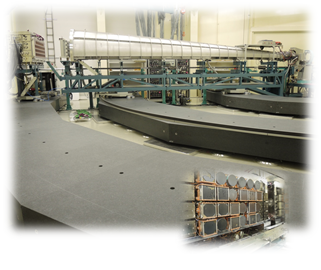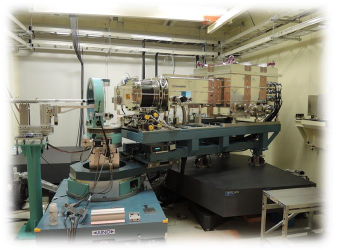[English | Japanese]
BL43LXU: The RIKEN Quantum NanoDynamics Beamline
Overview
The RIKEN Quantum NanoDynamics (RQD) Beamline, BL43LXU, leverages the strengths of SPring-8 (8 GeV, In-vacuum IDs, long straights) to create powerful instruments for non-resonant inelastic x-ray scattering [1]. Two spectrometers provide access to electronic and atomic dynamics over Å-scale correlation lengths. The beamline measures the dynamic structure factor, S(Q,ω), with, for the high resolution spectrometer, ~meV resolution over momentum transfers of ~0.1 to ~10 Å-1 and, for the medium resolution spectrometer, ~25 meV resolution over momentum transfers out to ~15 Å-1. The beamline layout is shown below, while the table indicates the main operating points.


Source
The beamline uses up to 3 tandem insertion devices to (each 5m long, 19 mm period, ~6mm minimum magnet gap) to provide extremely high flux in a fundamental that is tunable from ~15 to ~30 keV. In all cases, the beamline can operate with 2 insertion devices, however, depending on the details of the filling mode and operating parameters, the third ID can sometimes not be closed. See also [2].
High-Heat-Load Optics
The harmonics are removed from the central cone using a grazing incidence liquid-nitrogen cooled silicon mirror (M1), which, in the most extreme conditions (minimum ID gaps), reduces the power impinging on the high-heat-load monochromator from ~1800W in the central cone from the 3 IDs to <600 W in an area of about 1mm2. A Si (111) high-heat-load nitrogen-cooled monochromator is then used to select the relevant energy, and the beam is the returned to horizontal using a second mirror, M2, finally providing a beam with few-eV bandwidth and <1 Watt of total power onto the downstream spectrometer optics.
High-Resolution (~meV) Spectrometer for Atomic Dynamics
The high-resolution spectrometer is designed to provide resolution between about 0.75 and 6 meV, depending on operating parameters. A large array of (now, 28) analyzers (see photo inset), each with an independent detector, provides parallel measurements of different momentum transfers. These analyzers use a temperature gradient to improve resolution [3,4]. The large (10m) arm can be scanned out to ~55 degrees in two-theta. An overview of spectrometer operation containing many practical details for measurements of atomic dynamics of crystals can be found in [5].

Medium-Resolution (~10 meV) Spectrometer for Electronic Excitations
The medium resolution spectrometer is designed to provide ~10 to ~50 meV resolution at 15.816 keV. Compared to the high-resolution spectrometer, larger flux on the sample is achieved by relaxing the energy resolution and larger solid angle acceptance of the analyzers is attained by shortening the arm radius from 9.8 to 1.9 m - a solid angle increase of about 20 times. The spectrometer uses up to 9 analyzers operating with a T-gradient [3] at the silicon (888) back-reflection. The installed monochromator, using a carefully temperature compensated nested design, provides about 2.3 THz in a 22 meV bandwidth. The analyzers are under development, with the best achieved resolution presently ~27 meV over the full analyzer area. Please contact staff if you may be itnerested in using this spectrometer: we try to collect proposals to run together.

Important Note For Potential Users
If you are writing a new proposal for RIKEN's BL43LXU, it is strongly suggested that you contact BL staff (below) before submission. Also, for RIKEN proposals, note that the RIKEN system of (1) proposal review followed by (2) a separate application for beam-time, is different than that for public beamlines at SPring-8. Also, within the RIKEN system, the calendar deadlines may not be the same for all beamlines (some beamlines have a very short - e.g. 6 week - review cycle, while BL43LXU has a longer cycle).
Sample Mounting/Environment
Eulerian Cradle (Huber 512) that can mount:
a) Standard 1003a manual goniometer head for samples used in air.
b) Small xyz-stages for careful alignment of, e.g., samples in HP DAC cells.
c) Closed Cycle Cryostat: ~7 - 300K.
d) CryoFurnace: ~20 - >750K. (Base temperature depends on detailed operating conditions
Other sample enviroments can be available (crystals to 2K, disordered materials to 2000K, 7T Magnet, laser heating) but should be discussed with beamline staff long before any proposal submission
Large XY stages are avialable for user sample containers
A microscope and manipulators are provided for sample mounting.
A flat panel area detector can be used to collect powsder patterns.
Links
BL43LXU Local Pages: Advice for users, Sample Mounting Details, etc.
PLEASE READ THESE PAGES CAREFULLY!.
Overview of IXS on Crystals
Materials Dynamics Laboratory
RIKEN Home Page
SPring-8 Access
References
[1] A. Q. R. Baron, SPring-8 Inf. Newsl. 15, 14 (2010).
[2] A. Q. R. Baron, T. Tanaka, K. Soutome, M. Takao, T. Nakamura, K.
Kobayashi, T. Fujita, S. Takahashi, H. Aoyagi, Y. Shimosaki, T. Seike,
H. Uchiyama, D. Ishikawa, T.-H. Chuang, H. Kimura, H. Tanaka, H.
Kitamura, and T. Ishikawa, AIP Conf. Proc. (Accepted)
[3] D. Ishikawa and A. Q. R. Baron, J. Synchrotron Rad. 17, 12 (2010).
[4] D. Ishikawa, D. S. Ellis, H. Uchiyama, and A. Q. R. Baron, J. Synchrotron Rad. 22, (2015).
[5] High-Resolution
Inelastic X-Ray Scattering I&II. A.Q.R. Baron, Chapters in
"Synchrotron Light Sources and Free-Electron Lasers", E. Jaeschke, S.
Khan, J. R. Schneider and J. B. Hastings, eds., Springer, 2015. See also: http://arxiv.org/abs/1504.01098
Contact: Alfred Q.R. Baron, baron@spring8.or.jp
